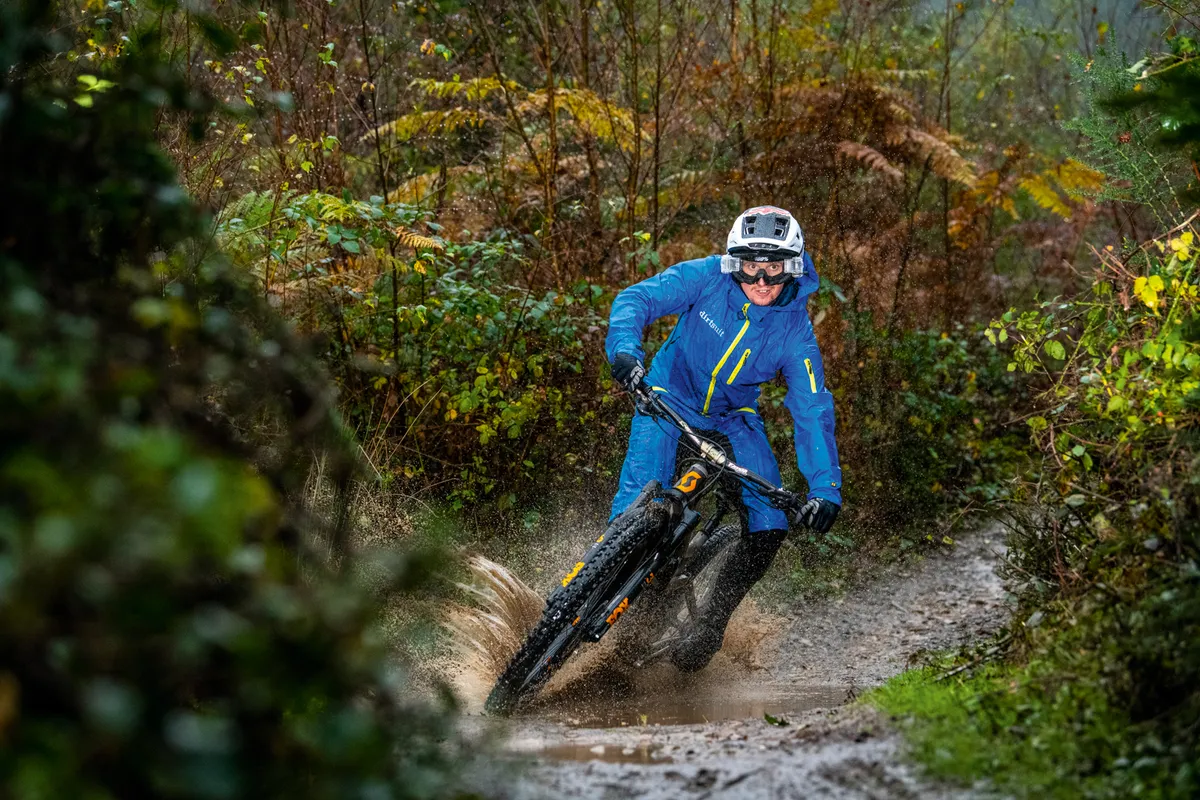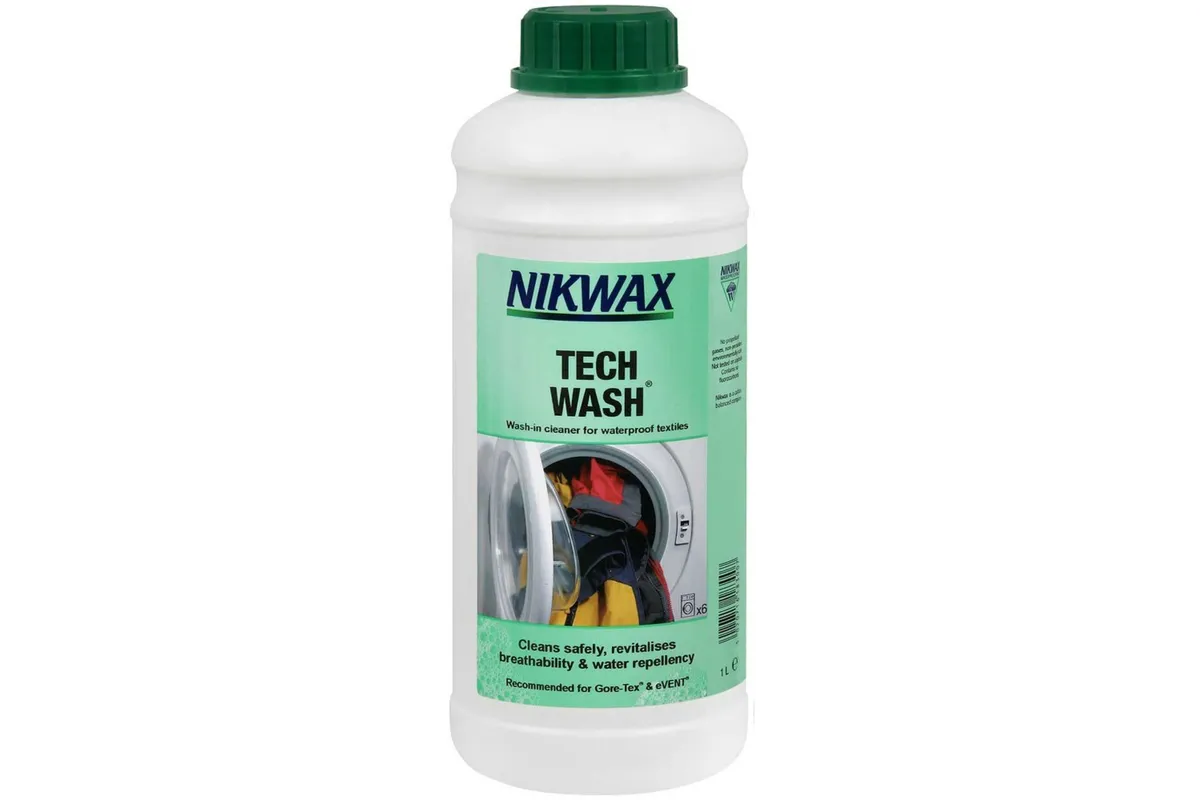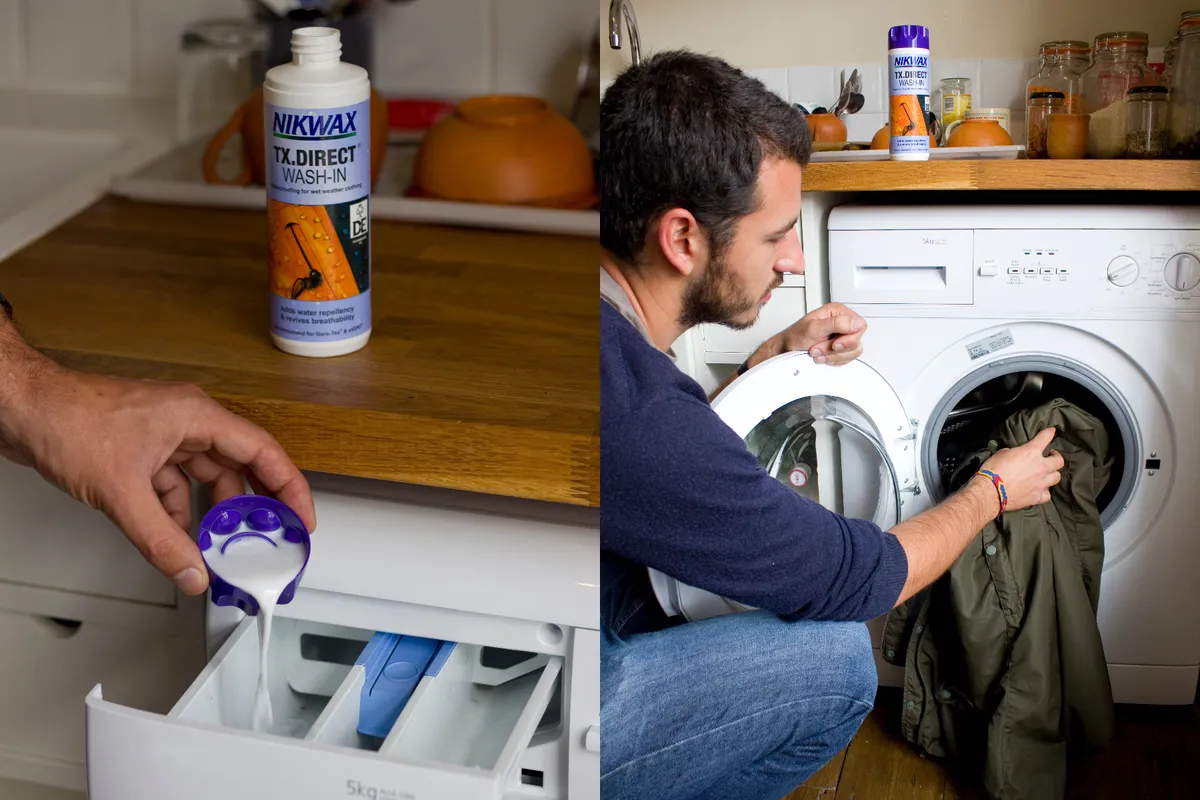Waterproof cycling clothing is often a big investment for most riders, and looking after it properly is essential to keep it working at its best.
Over-washing waterproof gear can reduce its performance, so how do you look after it without losing its waterproofing ability?
Fabrics such as Gore-Tex and eVent are complex. They have a breathable waterproof membrane that lets vapour through, but not liquid, plus a hardwearing outer fabric for protection.
This outer layer is treated with a Durable Water Resistant (DWR) coating. This makes water bead on the surface and stops it soaking in, but the DWR coating wears (or washes) off over time, leading to ‘wetting-out’ and stopping the vapour (your humid sweat) from passing through the fabric.
So a well-worn jacket can leave you feeling wet after a long ride, but as waterproofing specialist Grangers says: “This isn’t the membrane letting water in, it’s your sweat not getting out – waterproof fabric will only let water in when it’s damaged.”
That DWR coating is vital then, and restoring this invisible layer is the basis of re-waterproofing your garments. You need to make sure your jacket or other waterproof clothing is clean before you can restore it though.
However, if you’ve splashed out on a jacket that uses Gore Shakedry fabric or similar, the membrane is the outer layer of the fabric, so it’s permanently water repellent without needing a DWR coating. Cleaning it should just be a matter of washing it using a technical wash, as described in step 3 below, then drying it following step 8.
10 tips for successful re-waterproofing
1. Keep it clean

Mud, grit and sweat clog the membrane, and the abrasive mush can wear away the DWR with friction. Waterproofing specialist Grangers suggests spraying off visible mud after each ride, and doing proper washes every three rides or so.
2. Take care with chemicals in washing detergents
Regular detergents have additives, such as perfume, and are designed to wet-out the fabric so the detergent passes through – which is not how waterproofs work. Many recommend special ‘tech washes’ instead, but surprisingly Gore says they don’t really offer any benefit.
We’ve found our stuff needs re-waterproofing more often when using normal detergents, so would recommend specialist cleaners. And definitely avoid fabric conditioners and stain removers.
3. Invest in a technical wash

A proper technical wash is not cheap – expect to pay £6 to £7 for 300ml of a Grangers or Nikwax-type product. Nikwax says two garments will need 100ml of washing liquid in soft water areas or 150ml if your water is hard, so you’ll get through it quickly too.
These detergents don’t have any additives, though, and unlike soap flakes, don’t create a scum in hard water.
4. Make sure your washing machine is clean

Washing machines can harbour residues from regular detergents, and Lancashire Sports Repairs suggests a quick empty run to clean it out.
Once you put your clothes in, run them through on a 30ºC or 40ºC regular cycle, with the zips zipped up and toggles shortened as much as possible.
5. Put in the effort to reap the rewards

Now your gear is properly prepared, you’re ready to get to work – new DWR will only replenish old DWR if it’s clean. Re-waterproofers add a new DWR coating, enabling water to bead and membranes to breathe.
How much performance will it restore? Once the DWR is reapplied, your clothes should perform "pretty much as new," says Grangers.
6. Separate cleaner and re-waterproofer, or an all-in-one product?

Many companies offer all-in-one wash and re-waterproofing products. Should you use these or are individual detergent and re-waterproofing products better?
All-in-one products only require one wash cycle, so they’re quicker, but your clothes will usually need to be (gently) heated afterwards to activate the DWR. Their two components work against each other, and the DWR needs a heat boost.
All-in-one products don’t perform quite as well as individual products.
7. Spray or wash-in?
Re-waterproofers come in two types – wash-in or spray-on. Wash-in products treat the whole garment, but that’s okay because the DWR will mostly only bind to existing DWR on the outer surface.
Spray-on treatments are better if the inner fabric is breathable.
8. Dry it right
Generally, you should let your garments drip-dry after washing. However, if the garment’s label allows, a cool-ish tumble dry can help speed up the process – plus, as mentioned earlier, it activates the DWR when an all-in-one solution has been used.
Remember to empty the pockets of water before hanging!
9. Use a quick fix
If you don’t have time for a full wash, there are a couple of quick fixes that can help.
Firstly, you can wash the jacket with a technical wash and not use a re-waterproofer at all. Removing dirt and sweat will boost breathability.
Secondly, a quick run of an iron on its coolest setting can rejuvenate existing DWR, but check the garment’s care label very closely first.
10. DIY DWR?
As DWR is a coating, you can add water repellence to almost any item of clothing with a wash-in product.
It won’t last long, or be as effective as factory DWR, though, because proper waterproofs are built with physically resistant details and heat-treated during production; Gore takes its fabric to 300 degrees.

